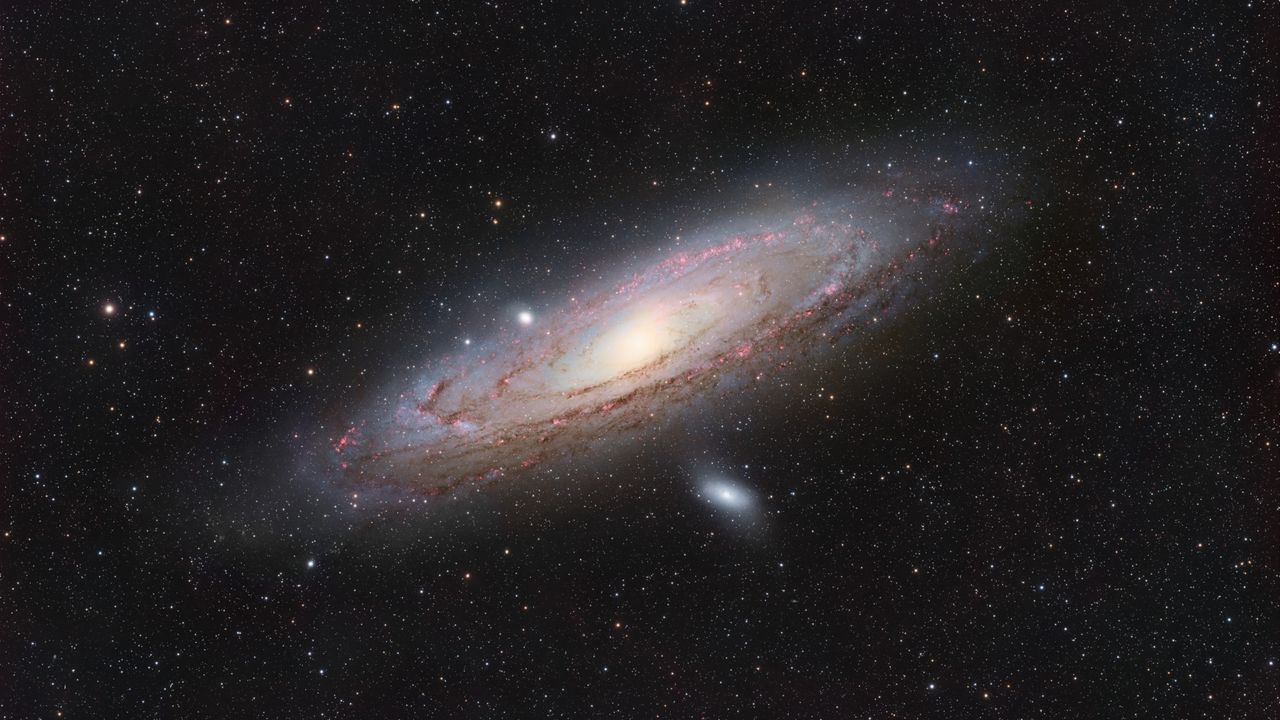Astrophotographer Ronald Brecher has unveiled a mesmerizing image of the Andromeda Galaxy, located approximately 2.5 million light-years from Earth. The detailed portrait showcases the galaxy’s sweeping spiral arms, which extend across a diameter of about 260,000 light-years. Brecher’s work highlights the intense light of ongoing star formation and the intricate dust lanes that spiral around Andromeda’s luminous galactic center, believed to harbor a supermassive black hole estimated to be 140 million times the mass of our Sun.
Brecher’s stunning capture also reveals the satellite galaxy M32, visible as a bright sphere at the upper edge of Andromeda’s disk. Below, the elliptical galaxy Messier 110 can be observed, hosting an estimated 10 billion stars of its own. This remarkable image was taken over a period of 38 hours, from August 17 to September 2, 2023, from Brecher’s home in Guelph, Canada. He utilized a Sky-Watcher Esprit 70 EDX refractor telescope paired with a QHY367C Pro camera to achieve this photographic feat.
In a reflection on his work, Brecher noted on his website, “Whenever I look at this galaxy — which is often with my naked eye — I think of the light reaching my eye having begun its journey before humans evolved on Earth. Pretty cool.”
Viewing the Andromeda Galaxy
The Andromeda Galaxy is easily located in the night sky, positioned less than 10 degrees to the upper left of the bright star Mirach in the Andromeda constellation. For stargazers in late September, Andromeda is best viewed shortly after sunset, with the span of a clenched fist accounting for the 10-degree measure needed to locate it.
Recent research has sparked debate about the future of the Andromeda Galaxy in relation to the Milky Way. For years, astronomers believed a collision between the two galaxies was inevitable, projected to occur in about 4 billion years. However, findings from the University of Helsinki suggest that the likelihood of this event has shifted dramatically. Researcher Til Sawala indicated, “the probability went from near-certainty to a coin flip,” highlighting the uncertainty surrounding the fate of our galaxies.
As astrophotographers and astronomy enthusiasts continue to explore the cosmos, Brecher’s work serves as a reminder of the vastness and beauty of our universe. His dedication to capturing Andromeda’s light opens a window into the past, allowing viewers to appreciate the celestial wonders that have existed long before humanity arrived on Earth.
For those interested in sharing their own astrophotography, submissions are welcome at [email protected].
